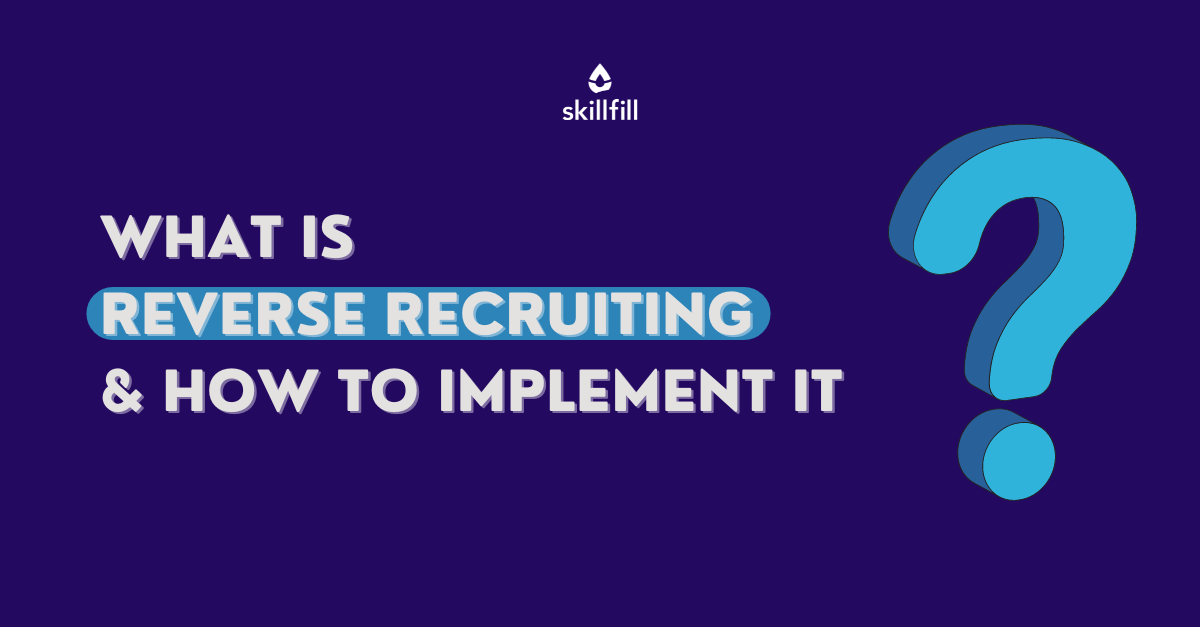Reconsidering Recruitment: Leveraging Reverse Recruiting for Competitive Advantage
Unlock the Power of Reverse Hiring Strategies for Effective Skill Procurement
In the world of ability acquisition, the landscape is frequently evolving, with new strategies arising to satisfy the demands of a competitive market. Amongst these methods, reverse recruiting stands out as a technique that flips the traditional recruitment procedure on its head, placing the power in the hands of the candidates. By attracting leading ability to seek out chances within your organization, reverse recruiting supplies a fresh technique to drawing in and preserving vital employees. As firms make every effort to remain ahead in the talent video game, unlocking the potential of reverse recruiting techniques might be the key to securing a strong and vibrant workforce.
Understanding Reverse Recruiting
Comprehending reverse recruiting is pivotal in navigating the advancing landscape of skill purchase approaches. Unlike traditional employment approaches where companies seek prospects, reverse recruiting includes the positive approach of candidates seeking out prospective employers. This standard shift puts prospects in the vehicle driver's seat, enabling them to pick business that align with their values, job goals, and job choices.
Essentially, reverse recruiting empowers candidates to take control of their task search process by investigating firms, reaching out to employers or employing supervisors straight, and showcasing their skills and experiences. For employers, this method provides an unique opportunity to attract top ability that are truly curious about the business and its goal, promoting a more engaged and dedicated labor force.
Advantages of Reverse Recruiting
Employing reverse recruiting techniques can produce considerable benefits for both candidates and employers in the ability procurement procedure. By being come close to by companies that have already determined them as possible fits for their organization, candidates can really feel much more valued and looked for after.
On the various other hand, companies can profit from reverse recruiting by getting to a swimming pool of passive candidates who may not be actively looking for new chances. This allows companies to target people with certain capability or experiences that align with their demands, possibly leading to greater high quality hires. Additionally, reverse recruiting can assist companies distinguish themselves in a competitive talent market by showcasing a positive and forward-thinking approach to employment. Eventually, the advantages of reverse recruiting reach both candidates and companies by streamlining the working with process and cultivating even more meaningful links in between both celebrations.

Applying Reverse Hiring Strategies
To successfully incorporate reverse recruiting tactics into a skill acquisition approach, companies must focus on proactive engagement with potential prospects. This requires identifying top skill within the sector and developing connections with them prior to a real task opening arises. One key method is to take advantage of social media platforms to get in touch with easy candidates who might not be proactively looking for new chances. By showcasing the company society, worths, and occupation advancement possibilities, organizations can stimulate the interest of possible prospects and build a talent pipeline for future requirements.
In addition, executing personalized communication strategies can also improve the effectiveness of reverse recruiting. Tailoring messages to individual prospects based on their skills, experiences, and career ambitions demonstrates an authentic passion in their prospective fit within the organization. Furthermore, organizing networking occasions, webinars, or workshops can give useful touchpoints for engaging with potential prospects in a much more interactive and personal manner. By consistently supporting partnerships with leading skill, companies can remain ahead in the competitive skill procurement landscape and secure the ideal prospects for their team.
Leveraging Modern Technology in Reverse Recruiting
In the electronic age of ability acquisition, using technological innovations is extremely important for successful implementation of reverse his explanation recruiting methods. Leveraging innovation backwards recruiting provides numerous advantages to simplify the procedure and attract top skill properly. Applicant tracking systems (ATS) play a crucial role in managing candidate information, tracking communications, and automating interaction, enabling employers to focus on building connections with possible hires.
Using information analytics tools can assist employers determine the performance of their reverse recruiting approaches, determine areas for improvement, and make data-driven choices to maximize the ability acquisition process - reverse recruiting. By accepting modern technology in reverse recruiting, organizations can remain ahead in the affordable talent market and safe and secure top talent successfully.
Determining Success in Reverse Recruiting
Having established the foundational duty of innovation in enhancing reverse recruiting methods, the next essential action depends on properly gauging the success of these ingenious methods. In the world of reverse recruiting, conventional metrics like time-to-fill and cost-per-hire may not completely catch the effect of these approaches. Instead, determining success backwards recruiting requires an extra nuanced approach that concentrates on prospect interaction, company branding enhancement, and long-lasting skill retention.
One key metric to think about is candidate experience. By accumulating feedback from prospects that have actually gone via the reverse recruiting process, companies can get useful understandings right into locations for enhancement and determine staminas to leverage. In addition, tracking metrics associated to company brand name assumption, such as social media sites sentiment and Glassdoor reviews, can provide a more alternative sight of how reverse recruiting is forming the company's reputation in the talent market.
Ultimately, success in reverse recruiting ought to be gauged not only by the effectiveness of loading functions yet additionally by the quality of hires, their alignment with organizational culture, and their long-lasting efficiency within the company. By taking on a detailed strategy to determining success, organizations can truly unlock the potential of go to website reverse recruiting methods for effective skill procurement.
Verdict
